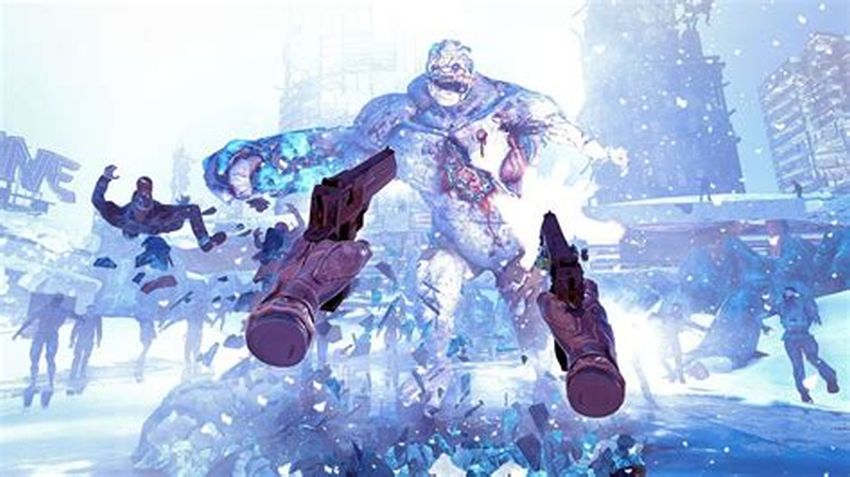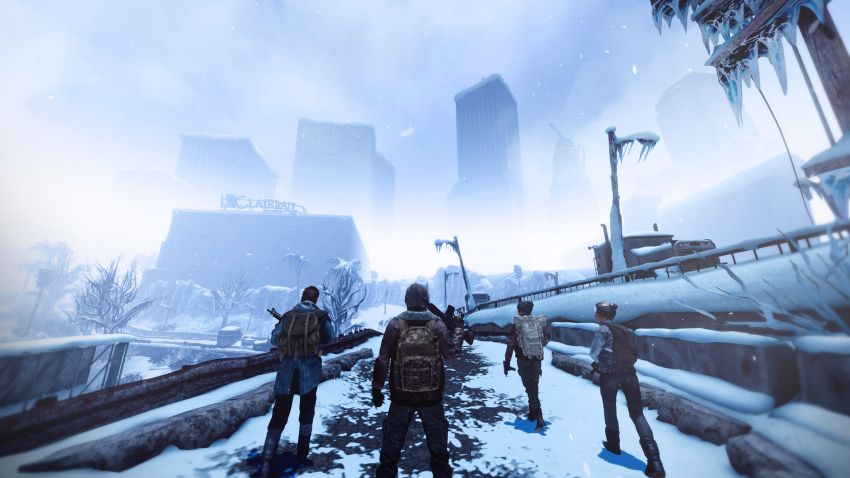After The Fall Complete Edition Review
After the Fall Complete Edition is one of the many PSVR 2 launch titles that is a port from other platforms, including the PSVR 1. After The Fall is the second zombie game from Vertigo Games, the first being Arizona Sunshine. Whereas Arizona Sunshine, also a multi-platform release, is a single player game, After The Fall’s focus is on four player co-op.
The life cycle of both Vertigo zombie games is very similar. The initial release was buggy, and it took a while for them to get it patched into anything resembling a polished product. Despite their rocky starts, both games are fun to play. The PSVR 2 edition comes with all the bugs worked out and all the DLC’s too.
So with all of that behind it, the PSVR 2 version of After The Fall is, without doubt, the best version of the game. This proclamation holds true for all the ported games available at the PSVR 2 launch. The combination of the PSVR2’s HDR OLED displays plus the haptics of the controllers and the headset immerse you in games like never before.
After The Fall follows the tried-and-true formula of co-op zombie games. You and three team members go to a map location and rid the area of zombies and collect loot. The zombies come in waves and end with a boss battle. If it’s an interim stage, you face a mini-boss. If it’s the final stage, your last opponent is the major boss. Then you move to the next map area and repeat.
After The Fall Popsicle Zombies
After The Fall takes place in a frozen Post-Apocalyptic Los Angeles that looks like Edmonton, Albert after a major snowstorm. An interesting twist and one that refutes the cold weather slows zombies down theory. You battle against zombies that have no trouble with Arctic temperatures.
Your base of operations is a Video Arcade where you can apply for missions – solo or co-op, upgrade your weapons, customize your weapons and your appearance, or accept invitations from other players to form a team. The stand up arcade cabinets act as your mission select console and you use an arcade light gun to make your choices.

There are steam punk vibes to the Arcade Center. Pipes run out of the arcade machines and the entire area feels like a decrepit neon punk bar. Fellow players also look like refugees from a Mad Max movie. The character models and animations are of a lessor quality than the zombies. They move about in a herky jerky style that would be off-putting in large doses. Thankfully, you spend little time looking at your counterparts and much more clocking zombies.
As for the zombies, they look pretty good and move more fluidly. They also disintegrate satisfactorily in accordance with your marksmanship. Limbs and flesh fly with copious amounts of blood. Their destruction provides a satisfactory visceral rush.
Feel The Weapons
The weapons are the standout aspect of the game. Vertigo has gone all-in on the PSVR 2 Sense controllers and their haptics. The trigger pull feels great and is unique to each weapon. If that doesn’t spice things up enough for you, be prepared for the headset rumble as they attack you.
Taken in tandem with the haptics is the reload action. In flat games, reloading is just a button push. That’s quick and efficient which allows you to hold your position. With VR, the reloading mechanic mimicked through hand movements adds not only a level of realism but tension too. You have to be quick on the reload or fall back. It’s amazing how all these small things add up to a greater sense of immersion.

However, if you prefer a more relaxed play style, you can opt for auto-reload. An option that carries over to other choices where you can determine how immersive you wish the VR experience to be. You can play seated or standing. Turning can be snap or smooth. Movement can be teleportation or smooth movement. The speed of smooth options is adjustable. If you need them to combat nausea, vignettes are also available.
In order to upgrade your weapons, item scavenging is necessary while on missions. Loot, weapons, and health are scattered throughout the map. Once you have collected enough material, you can go back to the Video Arcade and purchase the desired upgrades. Upgrades are not additive, however. You must choose between items. So say if you choose the laser sight, then you cannot have the electronic ammo counter.
Randomizing The Maps
Vertigo further mixes up the upgrade path by randomizing the drop locations for items. It doesn’t stop there. Enemies, health items, and weapons also have their locations shuffled on each play through. To further shake things up things, the types of item differ each time too. So a prized weapon that appears in one run may not show up in the next iteration. This keeps the game play loop fresh.
After completing a mission run, a summary screen is displayed. This shows how well you did and how much loot is collected. The items you pick are called harvest. And harvest is the currency and purpose of your runs. For with harvest, you can upgrade your weapons. The higher the difficulty level, the great the reward.

There’s a catch though to higher risk levels. At a certain level, any items in your possession when you die are no longer recoverable. If you don’t reach the safe room, then bye-bye goodies. This amps up the challenge level, maybe too much for some. If you make it, your items become permanent. This is an excellent break from other games such as Left 4 Dead or Killing Floor where you end up starting from scratch.
After The Fall has had an arduous journey to reach its current state of playability. The game is even better on the PSVR 2. The PSVR 2 is quickly establishing itself, in its early days, as the platform of choice for VR Games. This version of the game also includes two extra levels – Hospital and Subway – and cross platform multiplayer compatibility. This is, indeed, the complete and definitive version of the game.
*** PS5 code provided by the publisher ***
The Good
Cross-platform Multi-player
Randomized enemy and loot locations
Location specific wound damage graphics
The Bad
Difficulty ramps up too quickly
Overly familiar gameplay loop
Limited inventory slots
